by Kay Scheurer Steele (12/19/2022)
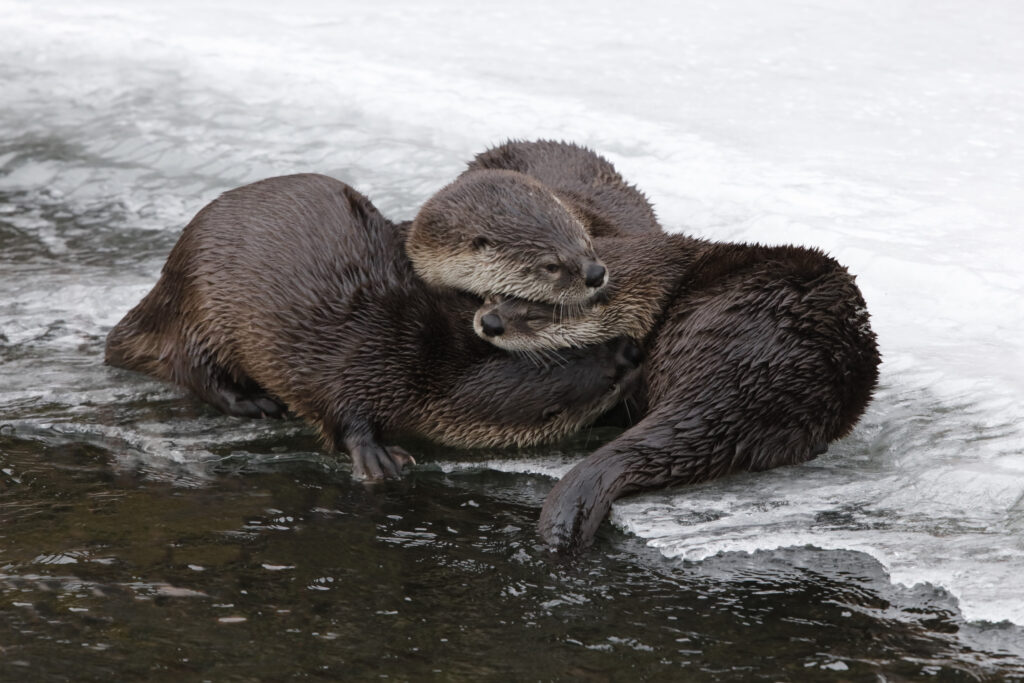
It’s not uncommon that while looking for a specific photo subject the totally unexpected happens – subjects appear that are not even on your radar. My focus was on locating the American dipper songbird I had recently photographed on the river nearby our home.
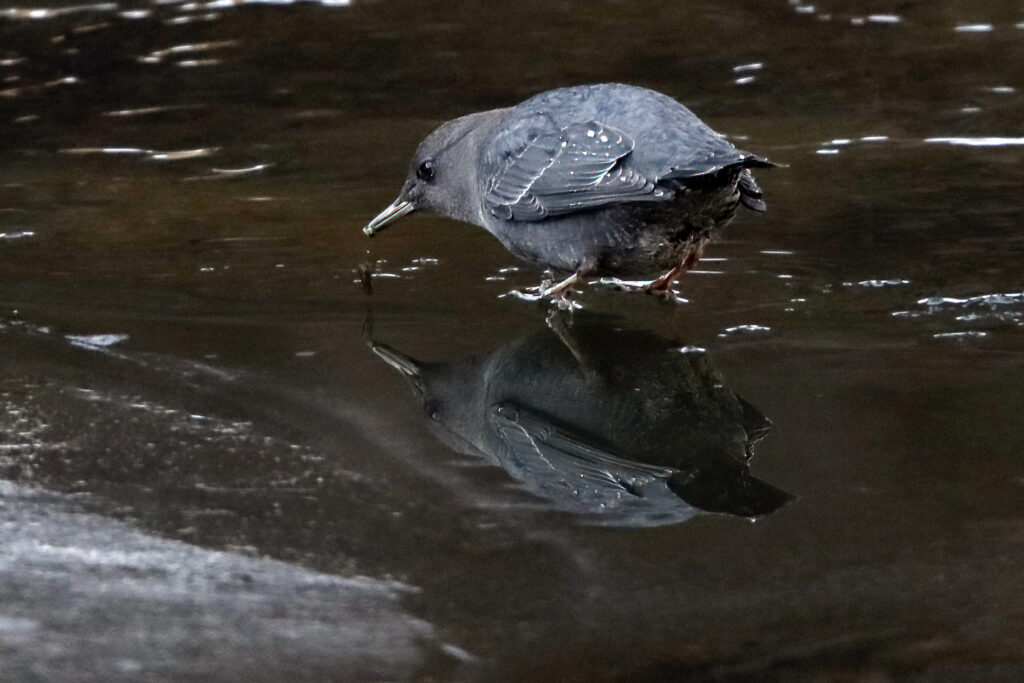
Driving along the wintry river’s edge, a passing glance caught the large head “periscoping” above the ice-channeled water flow, followed by two more large rolling brown bodies submerging themselves out of sight. River otters!
The first concern: being less than 25 yards away from them, would stopping and backing up a truck to the shoulder of the county road scare them off? It did not. Quickly, turning off the engine, I realized I was blocked by shrubs, so I grabbed a point-and-shoot camera setup, got out of the truck, knelt in the snow using a red osier shrub as a blind, and hoped for at least a couple of hand-held captures of a river otter romp. (This approach was a huge exception for me. I never get out of my truck while shooting, I use a long-distance lens with the truck as a photo blind to avoid entering wild animals’ comfort zones.)
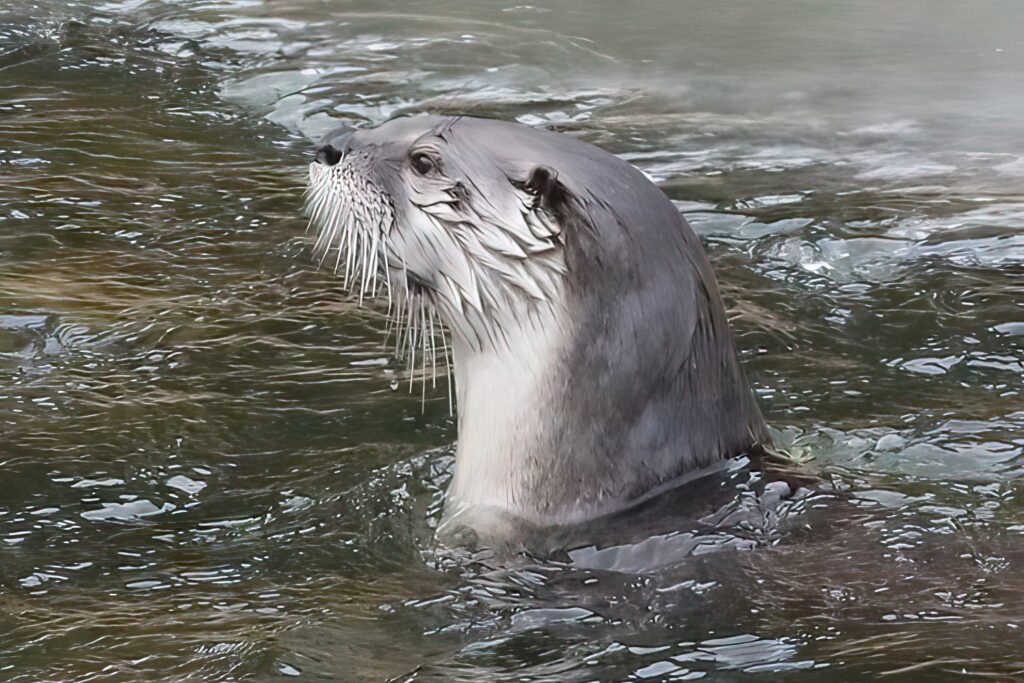
Their feeding frenzy was on, and the otters paid me no heed. Still, I did not want to disturb them. I got back into the truck, quietly released the brakes, rolled to a clearing and crawled into the passenger seat with the larger lens setup (840mm) pointed out the window. I had the good fortune to spend nearly an hour recording the wild otters “naturally” going about their day.
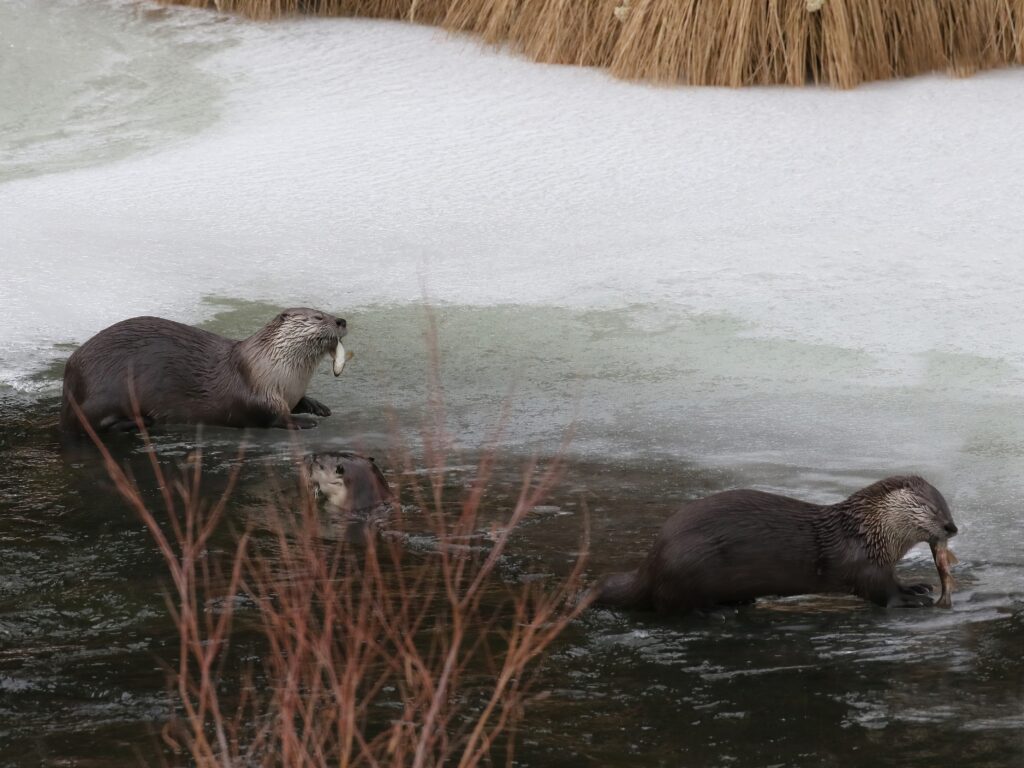
It was apparent that many fish were pooled up in a deep hole in the river. The otters worked as a team, stirring up and rolling down into the depths, and often surfaced simultaneously with fish clenched between their jaws. If a fish was a hard swallow due to its size, the otters hauled it onto the ice and worked to swallow the fish whole.
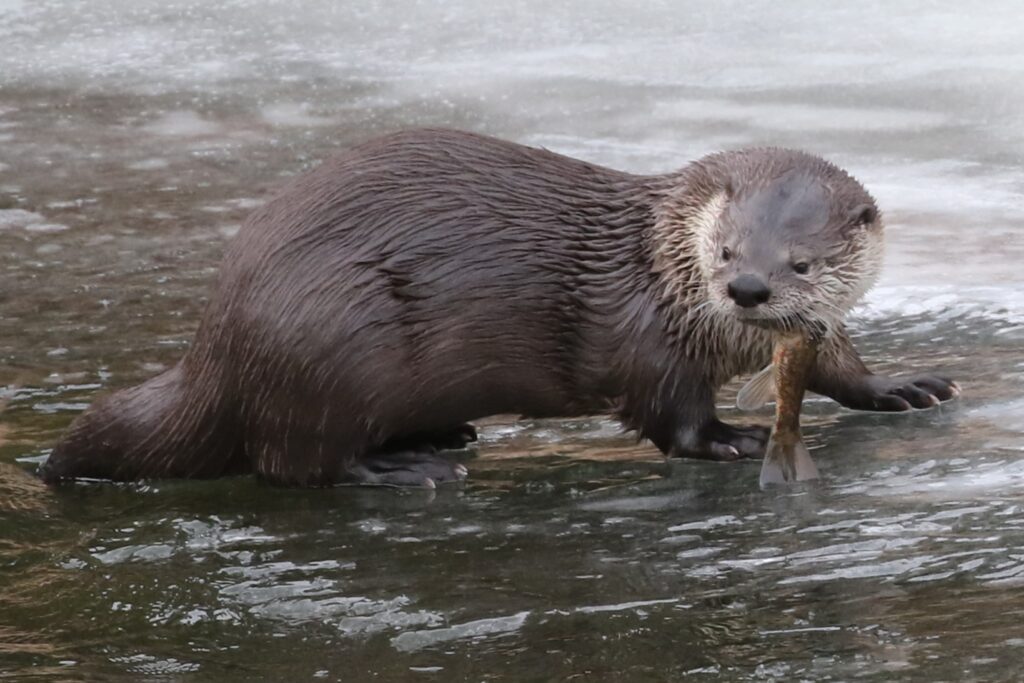
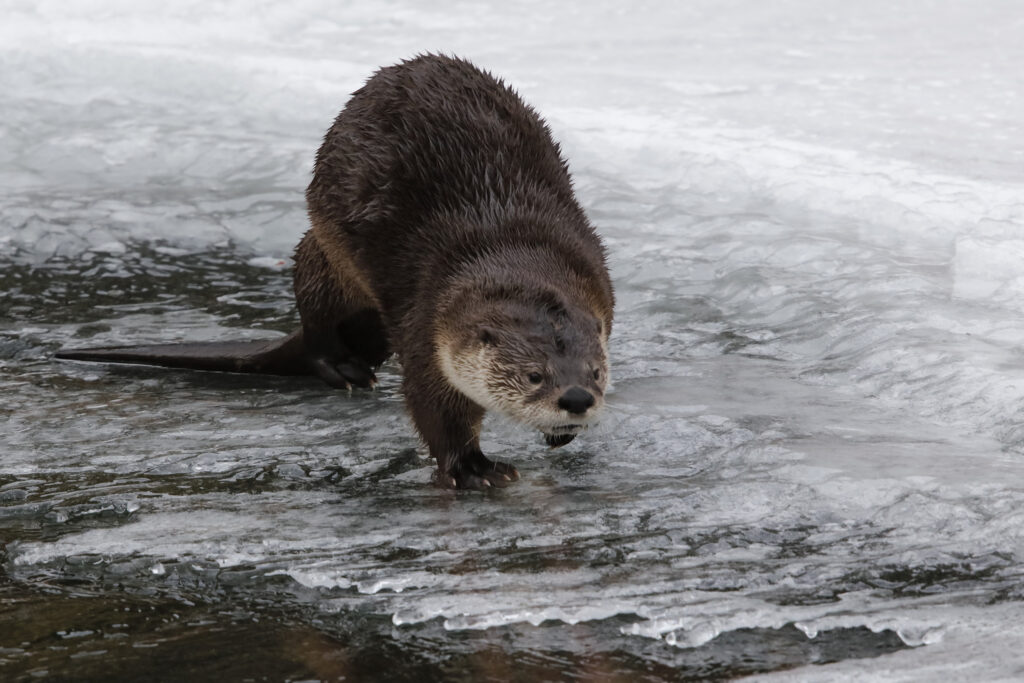
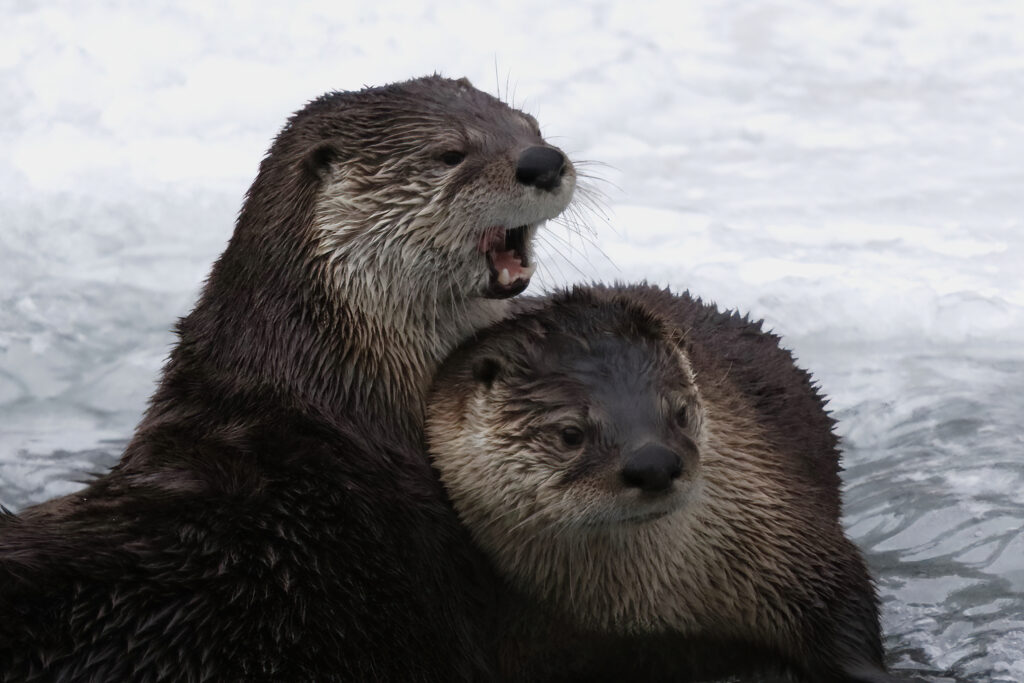
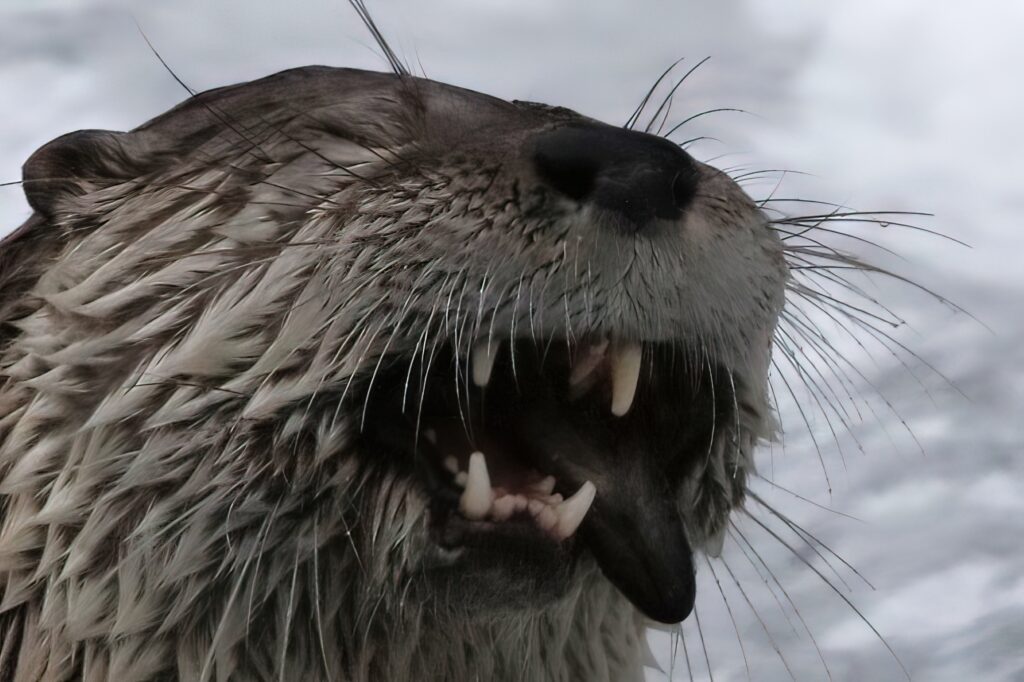
All this action was fast and furious, and had to be exhausting based on the number of times they all hauled themselves out, piled together to groom one another and rest, then scurried to a nearby rock to drop their feces, and returned to the fast flowing river to dive for fish again.
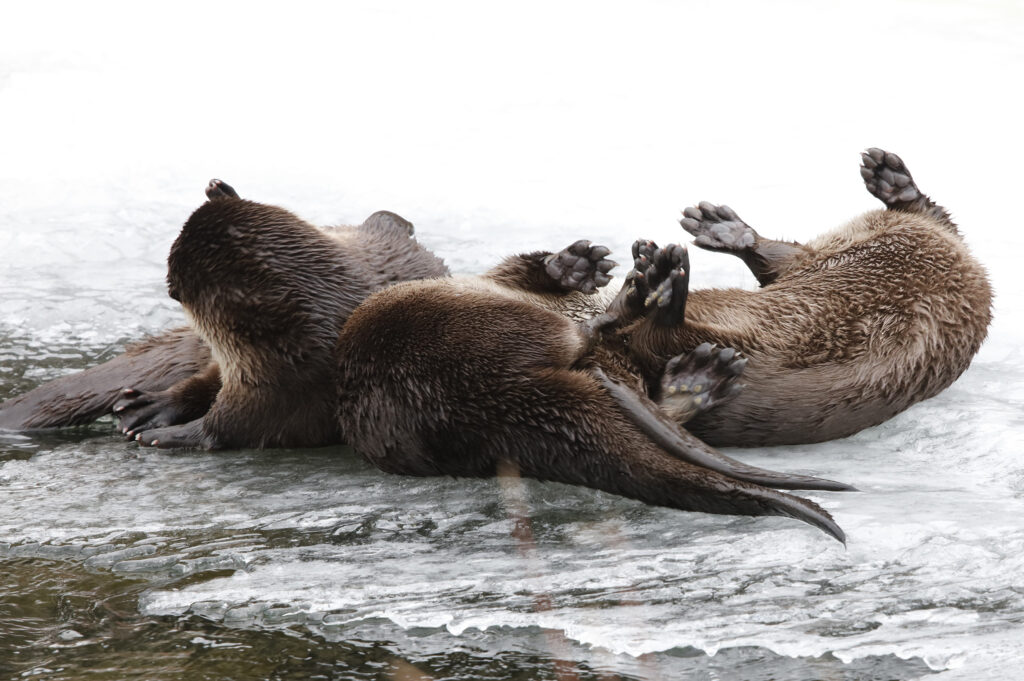
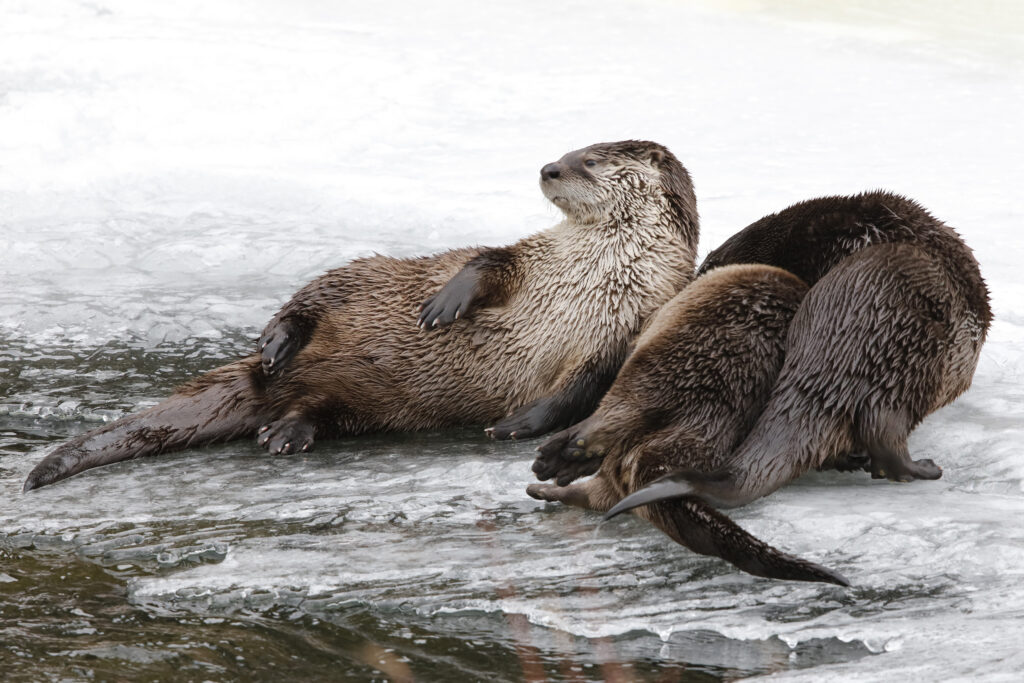
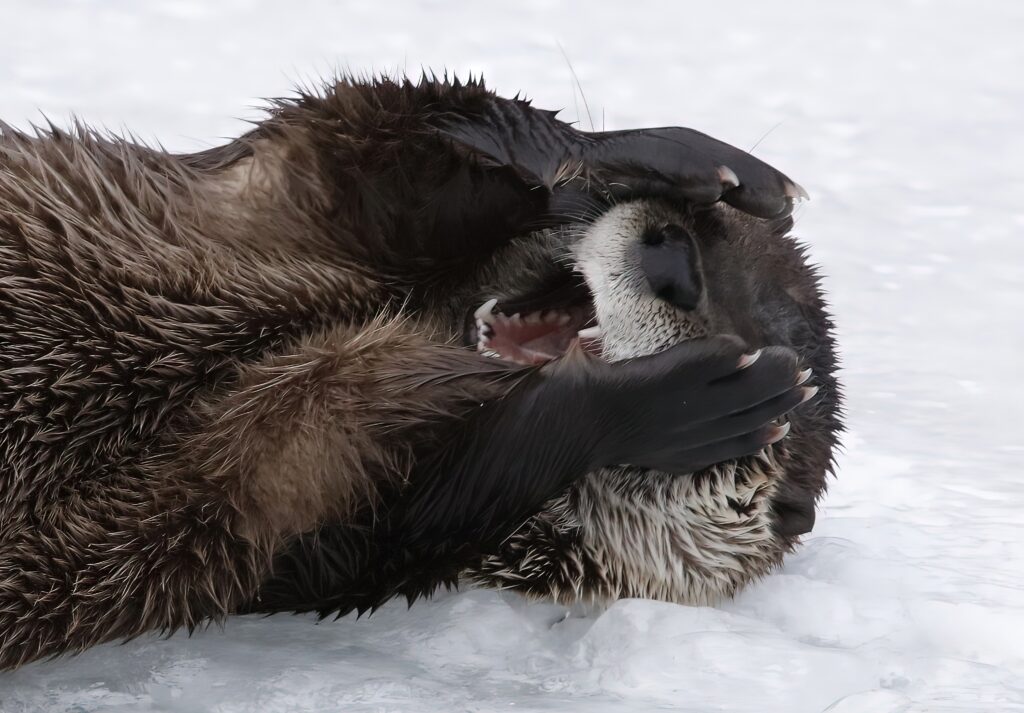
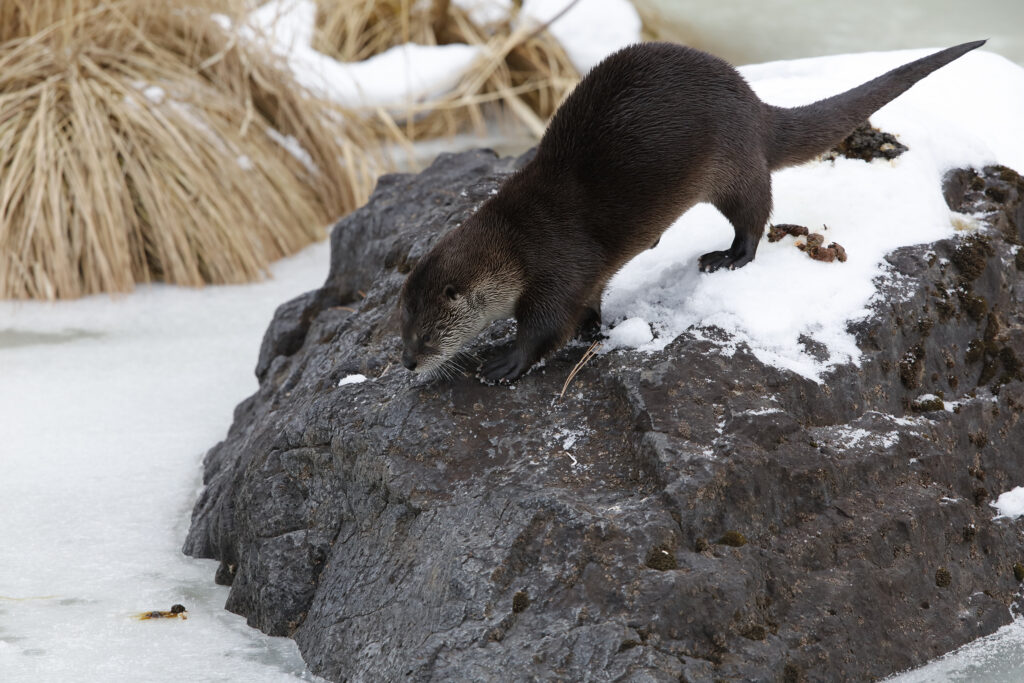
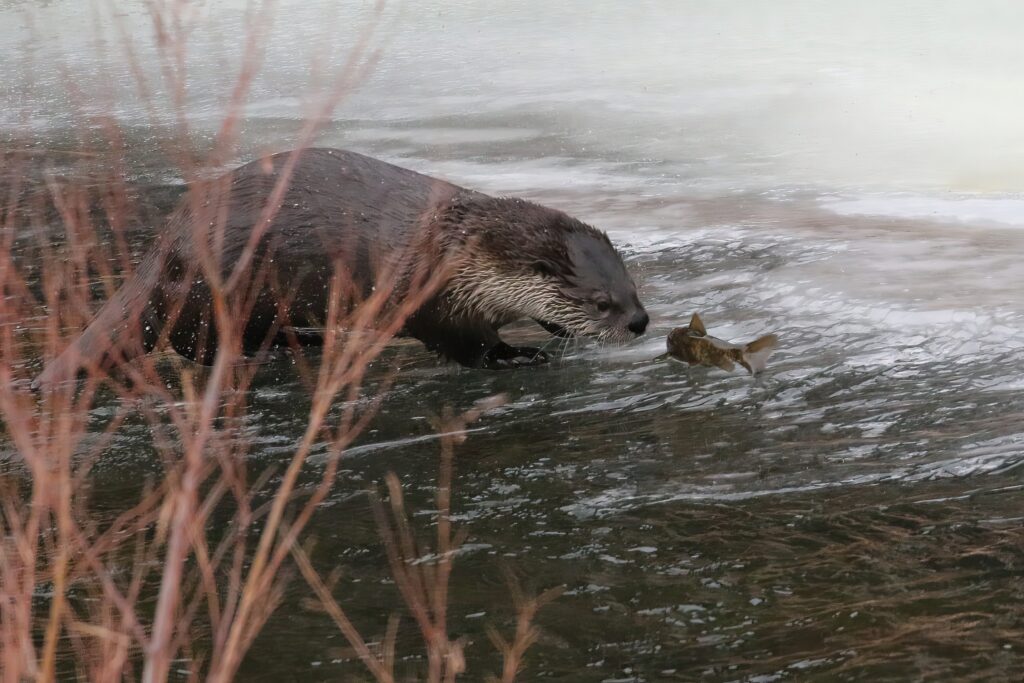
The constant motion did not go unnoticed by other hungry creatures in the area. A couple of bald eagles circled above and were spotted by the otters. When cramped muscles and frozen fingers made me pull away to turn the truck around and head home, I repassed the otters’ fishing hole the moment one eagle dive-bombed an otter to either prey upon it or steal its catch. It was flushed off by the timing of my arrival.
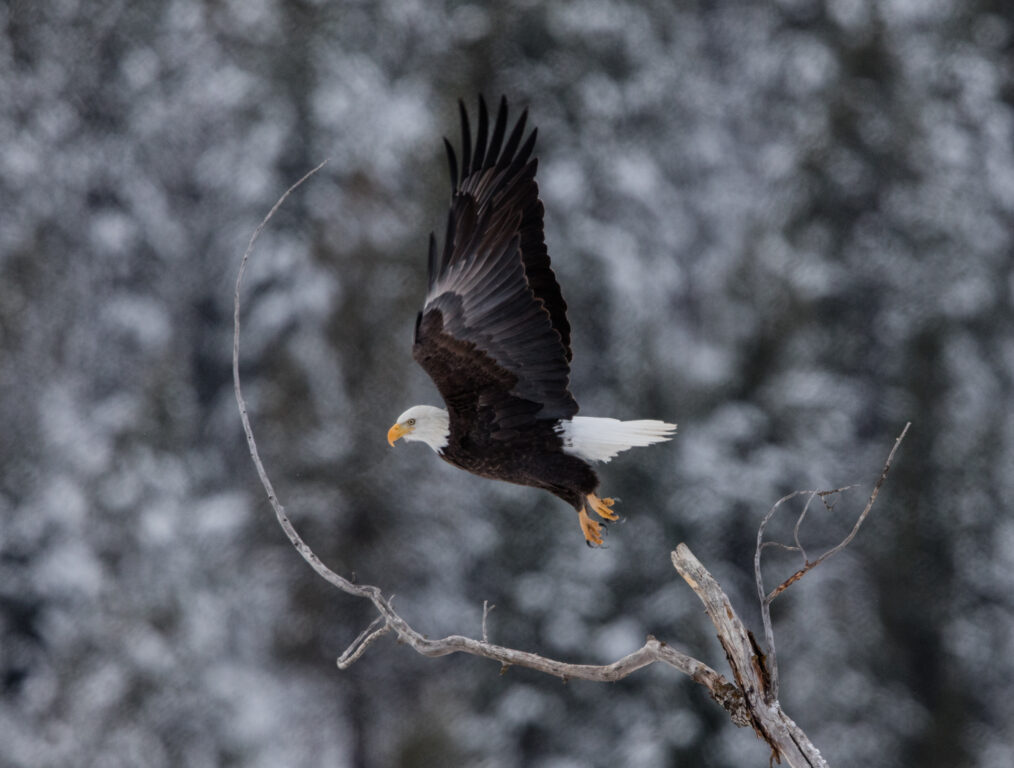
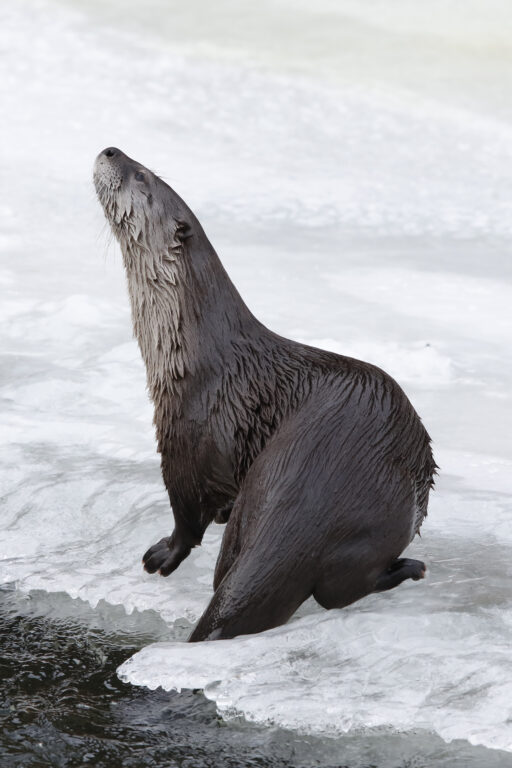
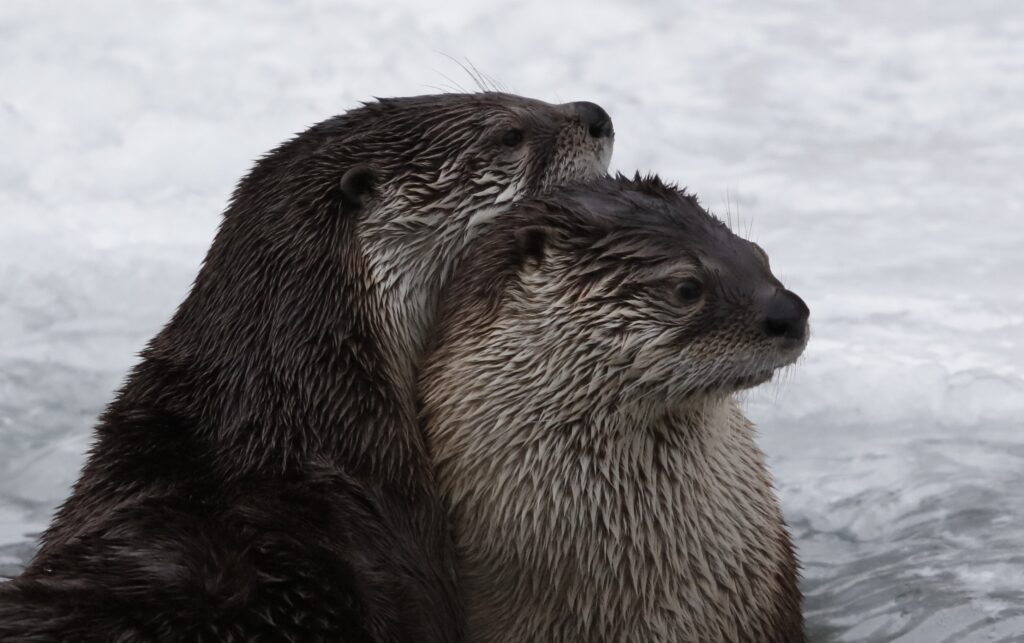
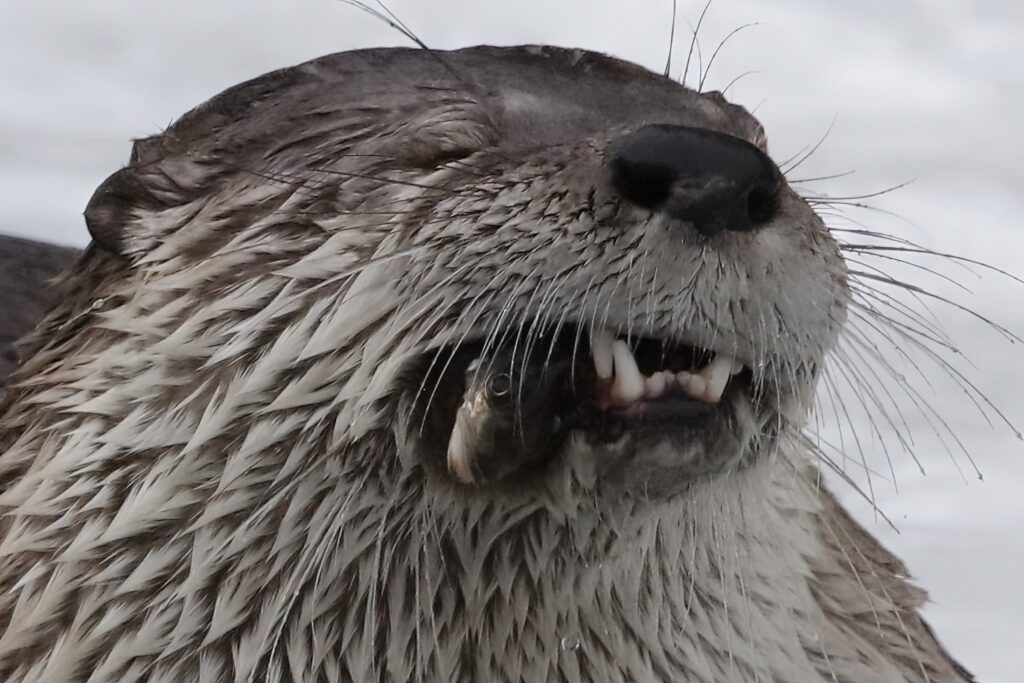
I probably made a friend for life with that otter. “Not only did she not interfere with our feeding frenzy, she warded off a stalking eagle! Dam! I mean damn!”
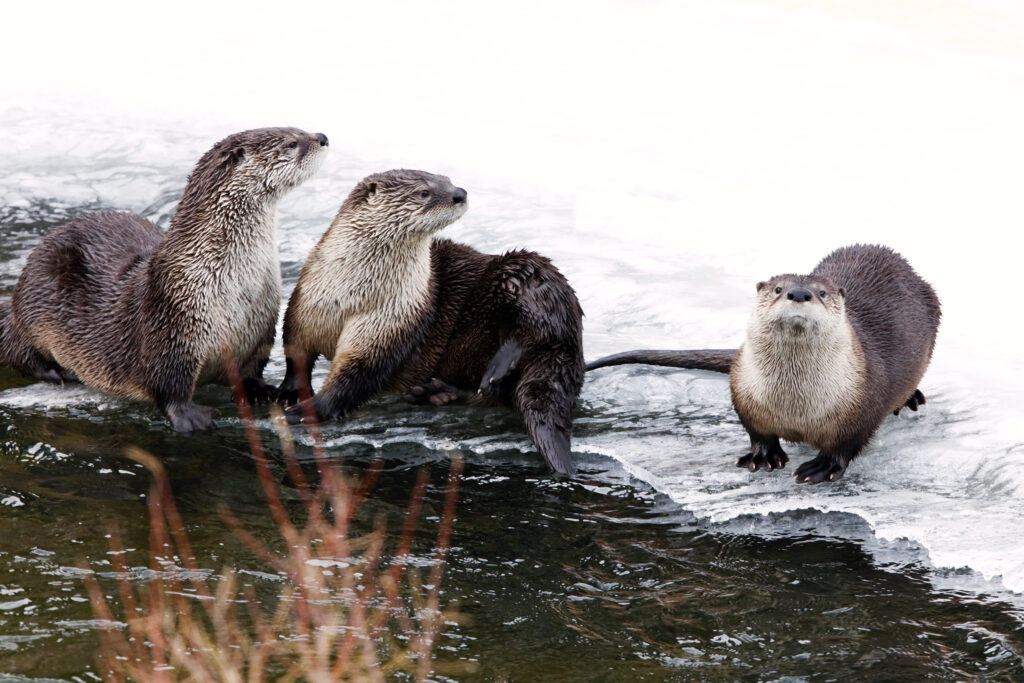
As a species, they are at the top of their food chain. Because of this, they are important as indicators of the health of the waterways they occupy. Polluted waters cannot support populations of otters.
The day of the otters, unforgettable.
Link to slideshow: “An Otter Romp on the Middle Fork.”